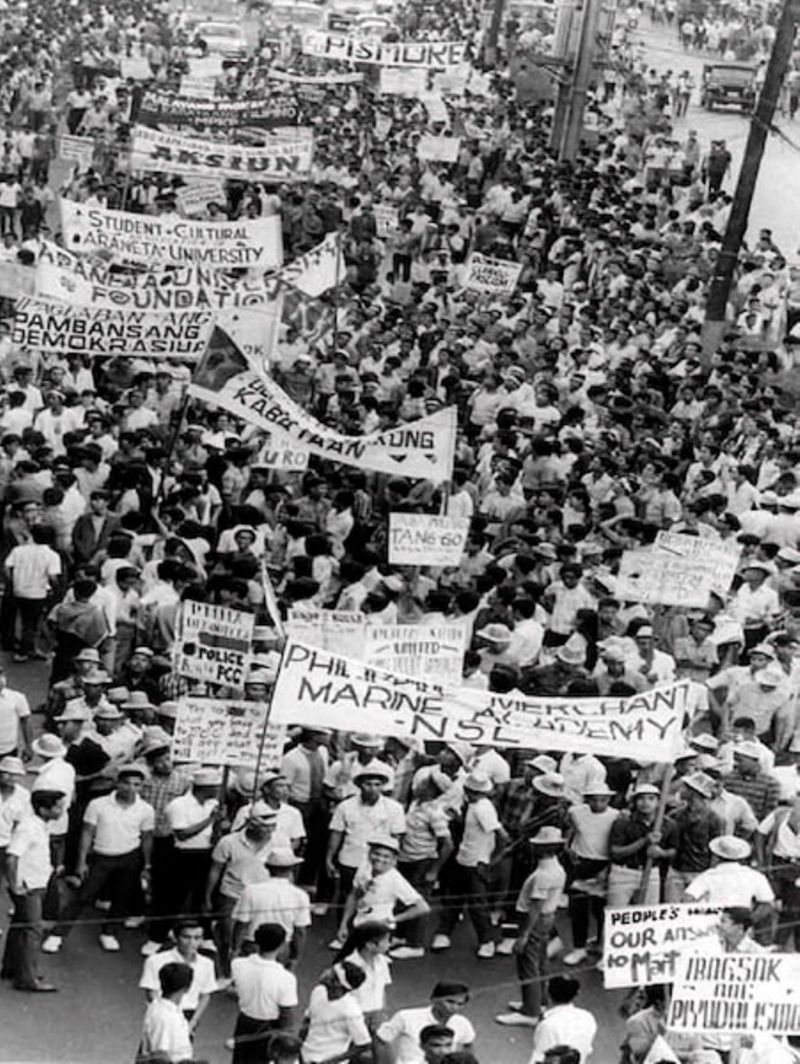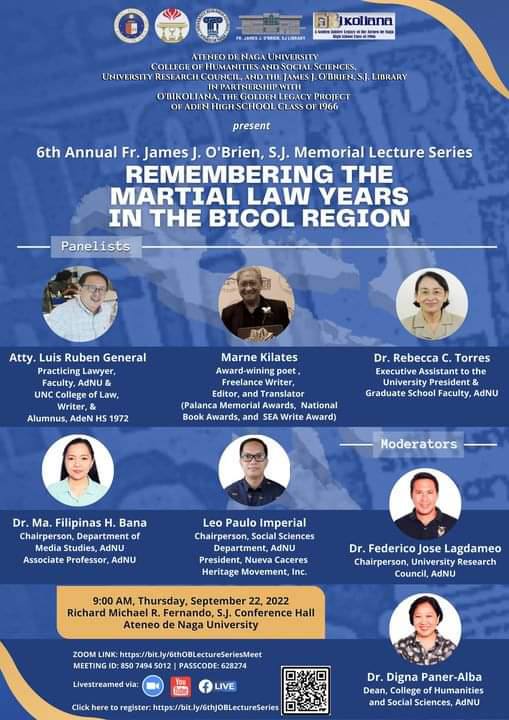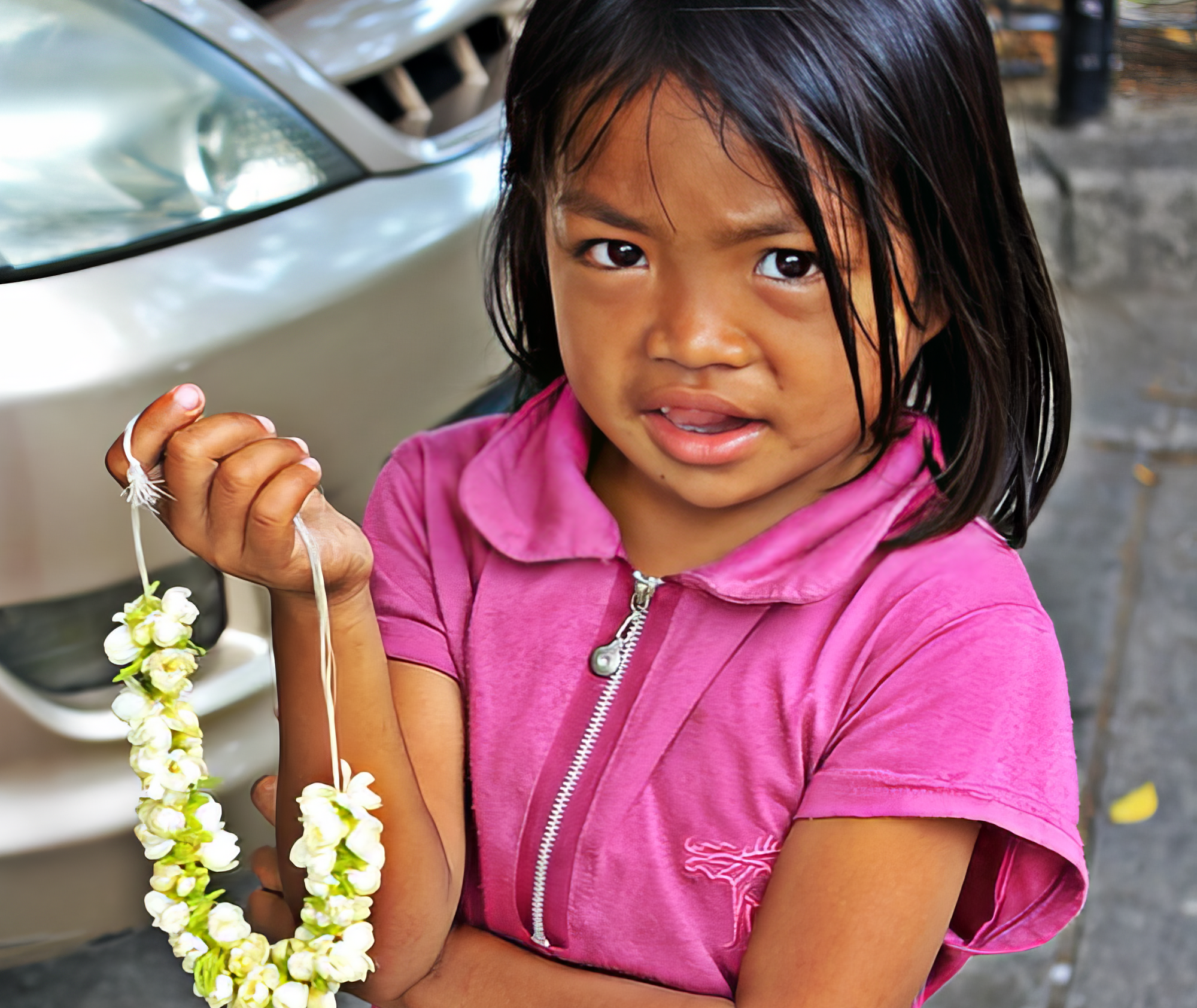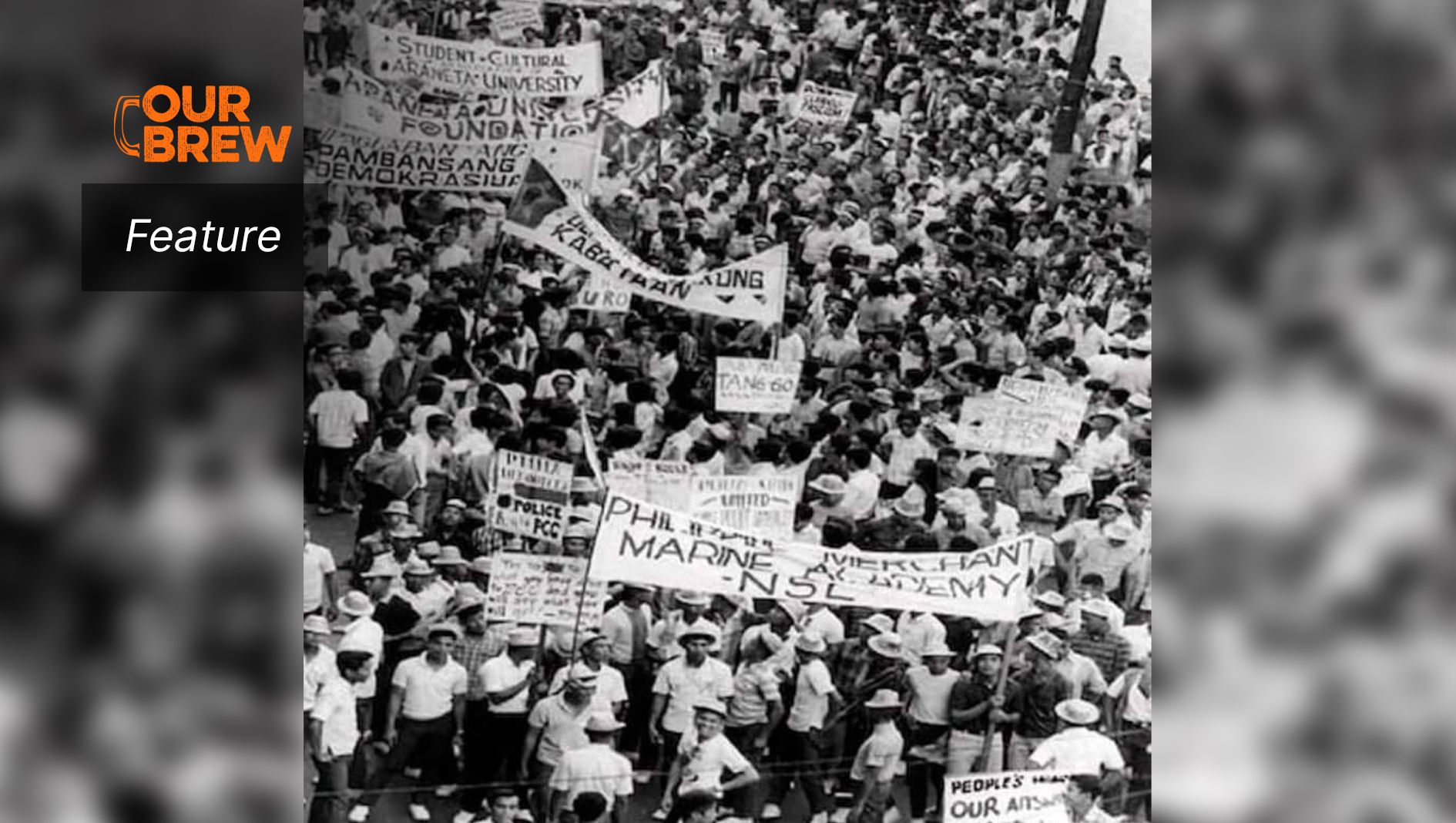
By Marne Kilates
I was assigned the rather broad topic of “Militarization and Student Activism,” with the parenthetical, “(This will include violations of human rights and all the abuses under Marcos's Leadership.)” And this comes under the overall theme of this conference, which, as we know, is “Remembering Martial Law Years in the Bicol Region.”
All this, of course, has a lot to do with memory, the favorite topic of fictionists and poets, and maybe not so much activists. But I guess we were activists in one form or another during these martial law years. Unless we were supporters or beneficiaries of martial law. Of this, later. That brings us to the other aspects of the discussion, which, as specified in our invitation, are: Militarization and Student Activism: [Their] Impact on Education and Culture; Socio-Economic Impact of Martial Law; Lessons Learned, and What Can Be Done.
That’s lot to discuss, indeed. But again, as we all know, martial law had such broad-ranging effect on our lives. Now, I think, that’s where the themes coalesce, where activists are also poets and poets activists.
So, what is my personal experience of martial law?
Let me get ahead of myself and state that I was a “minor” activist in that I was a courier for my more “hardened” activities friends. Meaning, these are my friends or classmates who have decided to join the armed struggle in the rural areas and highlands of Bikol, and who visited the towns to recruit, to take some rest, or to meet with other activists. My job was mainly to look for safehouses for my friends. I did not do this alone, of course, but with the help of other “minor” activists. We scoured the town―my hometown Daraga, specifically― for such shelters and our activist friends moved in and out of the town with our help. It was quite a delicate job but not as “heavy” as fighting in the mountains.
Other than my being courier and scout, I had a special skill that was quite useful during these times. I was a student writer. I edited the school organ of my college, the Divine Word College operated by the SVD in Legazpi City. Societas Verbo Divini, and again even my priest mentors had a lot to do with words or language, divine or socialist perhaps. My hometown was Daraga, but Legazpi, the city contiguous with my town, and where my school was located, I considered my second hometown. They were virtual twins; they shared a lot, including the natives who became town, city, or provincial officials; they exchanged more than goods, economics, gossip. So, I came from Daraga, I was educated in Legazpi City, my mother belonged to an old Daraga family, my father was a native of Naga City. I was a true-blue Bikolano.
When I was in high school our student organ was called The Dove. An innocuous name, apparently, but symbolic of divine wisdom, the Paraclete. When I was in college, I inherited from my seniors, which included the writers Toy Llaguno and Raffi Banzuela, the college paper called Outspeak.As you will notice, that is an obvious graduation in the use of language. Or in fact, it was another incarnation of the Word.
This is the other part of my being a minor activist. I wrote my first manifestoes during this period. I had written a rather interesting review of the first studio edition (not Broadway) of Jesus Christ Superstar, but a manifesto against the suspension of the Writ of Habeas Corpus was a different story altogether. We could publish a review of an artistic production in Outspeak, but not the manifesto: We had to mimeograph it clandestinely using the parish church’s Gestetner machine, to be distributed to church goers and the general populace. Clandestinely, of course. One was legitimate, the other had to be pamphleteered away.
As editor of the college paper, and having established some network of campus writers during the College Editors Guild (CEGP) press conference here in Naga City. In this conference I fraternized made longtime friendships with ADNU Pillars editors and writers, among whom were Junio “Jun” Ragragio, Chito Irigo, Willy Trinidad, Romeo Cruz, and Val Fajardo (+). By then, I could call for an organizational meeting of campus writers right there in the office of Outspeak. Which we did. We were mapping out our actions against the Marcos regime, and the anticipated declaration of martial law. We are able to gather quite a handful of student writerS, maybe two dozens. Our activist friends were quite impressed. Among the “hardened” activists talking to me then were Junio “Jun” Ragragio, Bert “Buboy” David, Roberto “Obet” Ador, and some others I could not remember. They were all now carrying the “Ka” appellation before their names, as Ka Obet or Ka Buboy. Jun belonged to the organization Khi Rho, and Obet and Buboy to SDK, I think. That’s Samahan ng Demokratikong Kabataan, the youth arm or offshoot of Kabataang Makabayan (KM). Our keynote speaker at the CEGP conference was the handsome firebrand, Tony Tagamolila.

You will recognize the names. But something happened on the way to forum. And it was no caper of Buster Keaton. An Ajax (the activist term for government agent) was able to get hold of the attendance sheet at the student writers meeting we organized at Divine Word. Or in plain language, he (or she) stole it. We could not do much to retrieve it or to change plans because of whatever risk there was with missing attendance sheet. We had to get on with our business. And then the inevitable happened. There was a wave of arrests and my friend, the late Rogelio Get Alim, playwright and actor, and myself, were arrested in our respective campuses. Get was a college boy in Aquinas University. On the gate of DWC facing the side of the provincial Capitol, I was unceremoniously “picked up” by a sargeant and asked to sit with him in a tricycle or motorized pedicab, and whisked away to Regan Barracks, to the detention center close to the office of the Provincial Commander.
The missing attendance sheet had yielded its fruits. Later, we found out that Jun Ragragio, Obet Ador, and Buboy David had also been arrested. They communicated with us via pieces of cigarette tin foil folded into tiny squares and the notes said that to spare us any pain from our guards (or any form of torture) we should already say their names as our “contacts.” I know that Get Alim who had a handsome physique, was subjected to manhandling (kinabog), and so were Jun, Obet, and Buboy. I was frail-looking college boy and I was thankfully spared. Our first morning was spent cleaning out the grassy area near the Provincial Commander’s office, and then we were asked to husk the waxed floors of the office (lampaso), and then we were asked to serve coffee to the Provincial Commander who was being interviewed by a few members of the media. And who would we find among the interviewers, who looked at us with wide-eyed shock, but the writer Pablo Tariman who at that time was working with Francisco Kit Tatad at the Department of Public Information (DPI). A longtime friend of many us, he was so shocked he almost spilled his coffee.
We were not always pulling amorseko or scrubbing the PC’s office or serving coffee. Rather surprisingly we had relatively some good free time under detention, perhaps because the team of Ajax agents were busy hunting for other activists. I made use of this time reading another anthology in my continuing self-instruction on poetry. I had my girlfriend then, Nene Narvaez, borrow and re-borrow from the open-shelf DWC library the book, Twentieth Century American Poetry edited by Oscar Williams. I had the book in hand when we were finally released from detention. I had also started reading the huge tome, A Treasury of the Theater edited by John Gassner, an extensive survey of texts from the Greeks through Ibsen, Pirandello, Lorca, to the contemporaries like Auden, Beckett, and Edward Albee. There was no actual or performed theater then in the province, so I read the plays as literature.
Back to Marcos’s martial law. With our group of detainees was a fellow CEGP member from Pili, a wiry young man as small as I was but more muscled. He had a ready smile and would laugh easily. But it turned out later he would join the military and let himself be commissioned. We didn’t know if he had anything to do with the missing attendance sheet. Get Alim and I were released after a month (the local Rotary had petitioned for our freedom), the others were later sent to Fort Bonifacio. They had been “promoted” to national detention to join the more famous or “notorious” detainees like “Doc” Bienvenido Lumbera, Jose F. Lacaba, Diego “Ogid” Oñate (also from Daraga), and others. They would spend a longer time in detention, some as long as three or five years.
This was our relative “peace” in local campus activism. The classes had resumed after their suspension with Proclamation 1081. The school organ was suspended as well so I was back to my inchoate poetry writing. I was reading The Voice that is Great Within Us edited by Hayden Carruth. It was a landmark collection of contemporary American poetry of the 20thcentury. I had found a job (ironically) with the local office of the National Grains Authority (now NFA) and I bought the book with first salary. I was recruited by a classmate, the radio announcer Grace Arnedo (nee Azupardo), a sister to two college friends, Roger and the late Edgar Azupardo, who remained my friends since then. With such books, I was looking forward to a poet’s career, whatever it was or whatever my idea of it was. But. And here’s the other part of the binary, our activist counterparts were being hosed down by the police at the boundary of Daraga and Legazpi, just in front of the Division Office and Regan Barracks (now Camp Bagong Ibalon). Or in far-off Libon near the boundary of Camarines Sur, and other “hotbeds.” They were shouting Ibagsak! while I was reading Hart Crane, e.e. cummings, Ezra Pound, and T.S. Eliot. Have I gone astray and took the road less travelled by activists? Was I melting into the misty edges of the bourgeoisie?
Again, we were minor activists. We continued writing updates and manifestoes on the martial law situation and pamphleteering them out to church-goers. At this time, I was also regularly meeting two activists from out-of-town, or from the edges of conventional provincial life. Every afternoon, at dusk, when the church patio on the hilltop, together with Mayon Volcano on the opposite horizon, was turning purple, I was meeting on the sly at the church grounds with Alex or Angel Belone and Henry Romero. Alex was a lanky handsome young man with a ready smile, while Henri was always with his trademark buri fedora by which he was known to friends and maybe foes alike. The late afternoon rituals for the departed, where prayers were offered and the priest and the organist sang Libera Me, Domine before the catafalque and swung the censer to send the supplications heavenward, had faded into an echo and our teach-ins for three had begun. Mostly updates on the armed struggle and the situationers on the worsening martial law regime.
These meetings we usually conducted after Alex and Henry had taken dinner at our house and had been fed by Mother her exquisite laing or gulay na apay and pritong galunggong (sibubog in Daragueño)―fish and vegetable―the standard daily fare of the lower middle class Bikolano. We only had meat on weekends, usually carabeef tinutungan, a meat stew swimming in yellowish coconut milk extracted from smoked grated coconut which gave it its famous and tasty burnt flavor. My guests enjoyed these dishes with expressed appreciation which pleased my mother. This relaxed interlude was also spent for listening to the popular records of the time: James Taylor, Carole King, and Crosby Stills Nash & Young (incidentally this coincided with the Kent Estate incident in the U.S.), and later Simon and Garfunkel, which we played on my sister’s newly-bought stereo set, a Toshiba furniture-type, her gift to the family from her first salary as a school teacher. It was bought, invariably, on installment.
(Let me digress a bit about the music. The American music industry was then promoting the sounds and talents of the singer-songwriters like James Taylor and company. This was a different track from the American Songbook and Rodgers and Hammerstein variety, sang by the likes of Frank Sinatra and Tony Bennet, but this was after artists such as Bob Dylan and Pete Seeger, the Joan Baez, Gordon Lightfoot, and Peter Paul and Mary had made their mark, and as aspiring poets and artists ourselves, we looked to James Taylor, Carole King, and Cat Stevens, among others, not just as entertainment providers but as admired creative models and reference points to our own creative work.)
And so, after listening to my records, we went back to our current Martial Law reality and it was time to go up the church grounds for the teach-in. This was our relative activist’s peace.
As we know now, the two activists would cease visiting me rather abruptly, as they met their inevitable tragic ends. Alex or Angel Belone was cornered by the military on Ateneo Avenue in Naga City. He fought and fell like a warrior, it was told, because he was an easy prey for the pursuing soldiers. His corpse was paraded for all the people to see and they gouged out his eyes to make him an example, to frighten everybody. Henry, the Manila Bulletin correspondent, disappeared into thin air, forever, apparently. What was left of him was his image with his famous buri fedora, in a cryptic news item about his disappearance, which made for an obit in the newspaper he worked for. I didn’t know how to react. I refrained from telling my mother the news. I was both quite intimidated and angered, I had to lay low for some time for my own safety. This segment of my martial law story had come to an end.
Still to another degree of irony, I left the province in late 1977 as I was offered a slot at the NFA Centra Office to write for the corporate publications of the agency, the internal organ Grains, and the industry publication Gintong Butil. I worked at the Directorate for Public Affairs under newspaper columnist Art Borjal. Borjal, who was later to inherit the Jaywalker column from Doroy Valencia. Certainly, I made friends with other NFA writers, among them Danny Consumido, the late Dindo Odra, and Feddie Espiritu. We were sometimes asked to write first drafts of speeches for the Frist Lady, Imelda Marcos, who was Chairman of NFA, while Danny and Dindo ghost-wrote for Borjal’s Jaywalker column. Now I had swung to the other side of the spectrum. But Danny Consumido introduced me to the Galian sa Arte at Tula (GAT), the poetry group founded by now National Artist Virgilio S. Almario. The poetry organization was of the modernist, socially-oriented literary school.
(Flash forward: After my NFA stint I transferred to another government agency, the National Home Mortgage Finance Corporation [NHMFC]. I took advantage of the early retirement offer in 1989 and after a brief jobless interlude, and a trip to Russia with poet Mike Bigornia (under an exchange program with the Writers Unions of Moscow and Manila), I moved to the private sector and joined an advertising agency. This was Tony de Joya’s Advertising and Marketing Associates [AMA], which later became DDB Needham and DDB Philippines, where I made my second retirement after some 19 years of work as copywriter and later as executive creative director. The Ateneo poet Val Fajardo had joined Technology Resource Center [TRC], worked with another poet, Teo Antonio. We had renewed friendships and would see each other, with Teo and other, in many literary activities. But later we would lose Val to apparent stomach cancer.)
In the meantime, in the literary community I had made friends with poets. Among them, the aforementioned Teo Antonio, Mike Bigornia (+), Fidel Rillo, Jesus Manuel Santiago, Romulo Sandoval (+), Vet Vitug (+), Reuel Aguila. Some of the best in the land. I had also been invited to join the Philippine Literary Arts Council (PLAC), with poets Gemino H. Abad, Alfrredo Navarro Salanga (+), Alfred “Krip” Yuson, Ricardo de Ungria, Felix Fojas (+), Eric Gamalinda, and Juaniyo Arcellana. I had met my literary kindred. I had published my first book, Children of the Snarl and Other Poems.
After a circuitous route and long peregrination, I had found my way back.
Therefore, in closing, let me read to you the title poem of my first poetry collection. I think it resonates even more now in our current Marcos II era. The poem refers literally to the snarl of traffic, thesnarl of the urban poverty that surrounds us, and its children that populate our streets, and the snarl of Martial Law, with this round up of activists, its disregard for human rights, and the continuing disappearances, the plight of the desaparecidos.
Here is the poem:

Children of the Snarl
By Marne Kilates
Streetwise at starfall they come,
Taunting the clumsy behemoths of the rush hour,
The Children of the Snarl, unstartled
At the demented hunger of the highway,
Weaving a dance among eyes and fangs
Of myriad metal, prompted by their own hungers.
Merchants of poverty, dodgers of death,
They cheat mad chance in the flash of chrome,
In the glint of the fume-choked sun
Caught on the grime of the windshield glass,
In the storm-sunset on the fender-shine, offering
Flowers, appeasements for our own stale airs.
Our vision hurtles forward at morning,
Noon and dusk, borne by wheels tearing at space,
It hurtles between our faces in jeeps
Where we avoid each other’s gaze, somnambulant
Or asleep, with our sorrows and hurryings
Hidden, dressed and made up in haste.
There is no pause in the eyes that pursue
Their own appeasements. They peer at us,
We roll up our windows in vague defense,
Or concede buying a garland for our own icons
And talismans. Or choose a lottery ticket
For our chase of Ultimate Chance.
What link of flowers and lottery tickets
Joins us across the chasms of our classes?
What mindless mirth, hunger of eyes, insane dance
Of peddling small vices and poverty’s sweets
In the traffic our haste conveys us across
Craters in the asphalt, fissures in the concrete?
The lights time the rhythms of our chase.
The lurch and the wheel-skid summon their swarm
And us, Children of the Snarl: Slap of slippered
Feet, gnash of wheels worn smooth by pavements
Worn smooth by wheels, fume-storm in the crepuscular
Swelter of crushed petals and burning rubber.
And the rain season devours us, the headlights
Blind us: Grit in the metal gutter, leaf-shard and
Insect wing on the windscreen, stale air and perfume
From the aerosol spray. As dust, dirt and debris
And the day’s wrappers sail downstream, in the watery
Iridescences of the monsoon in the ditches.
(c. 1986)
Marne Kilates
Makati South Hills
22 September 2022
If you liked what you just read and want more of Our Brew, subscribe to get notified. Just enter your email below.


Related Posts
ChatGPT Facepalms, Responds to Bill Gates
Jun 24, 2025
Shifting Lines of Power in the 2025 Philippine Midterm Elections
May 22, 2025
The Our Brew Articles You Loved Most this Year
Jan 14, 2025